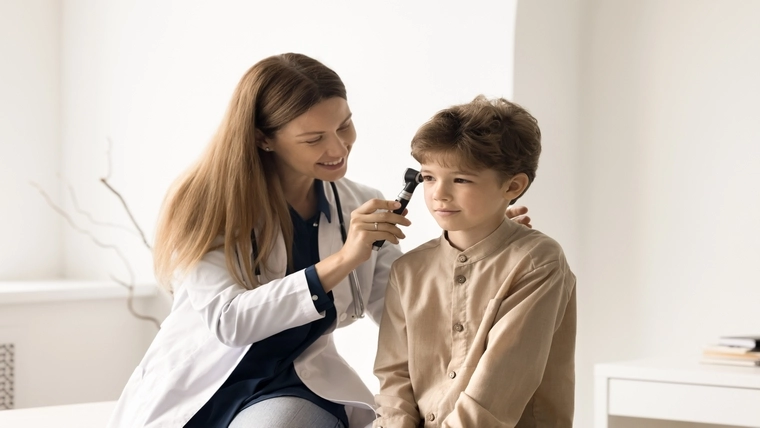
What is the Pediatric Audiology Department and What Diseases Does It Cover?
The pediatric audiology department is a field of expertise that diagnoses and treats hearing and balance disorders in children. This department covers various diseases such as congenital or acquired hearing loss, ear infections, balance problems and tinnitus. It also aims to monitor the hearing development of children and to diagnose and treat possible problems early.
About the Department of Pediatric Audiology
The pediatric audiology department provides all the services needed to protect children's hearing and balance health. Hearing tests, balance tests, hearing aid applications and rehabilitation services are provided in this department. Pediatric audiologists perform comprehensive examinations using the latest technologies to evaluate children's hearing abilities. They also provide information to families about their children's hearing health and provide guidance when necessary.
Who is a Pediatric Audiologist and What Are Their Duties?
A pediatric audiologist is a health care professional who diagnoses and treats hearing and balance disorders in children. Their duties include performing hearing tests, administering hearing aids and cochlear implants, determining the cause of hearing loss, assessing and treating balance problems, and providing guidance to families. They are also responsible for monitoring the hearing development of children with congenital hearing loss and planning appropriate treatment.
What Diseases Does Pediatric Audiology Cover?
The pediatric audiology department covers various hearing and balance problems seen in children.
The main diseases diagnosed and treated in this section are:- Conductive Hearing Loss: Hearing loss that occurs due to problems in the transmission of sound from the outer ear to the inner ear. This condition is usually caused by middle ear infections or problems with the eardrum.
- Sensorineural Hearing Loss: Hearing loss resulting from damage to the inner ear or auditory nerve. This condition is usually permanent and can be treated with hearing aids or cochlear implants.
- Auditory Neuropathy Spectrum Disorder: Hearing loss caused by problems with neural transmission between the inner ear, auditory nerve, or brain. This condition allows the child to hear sounds but have difficulty understanding them.
- Vestibular and Balance Disorders: Problems with the balance system may present with symptoms such as dizziness, imbalance, and difficulty in coordinating movement. Although rare in children, these disorders can have serious effects.
The diagnosis and treatment of these diseases are carried out by the pediatric audiology department, and early intervention is of great importance in protecting the child's hearing and balance health.
What are Pediatric Audiology Examinations?
Pediatric audiology examinations include various tests and methods to evaluate the child's hearing and communication skills and to determine the cause of hearing loss.
These examinations may include the following steps:- Hearing Aid Evaluation: Hearing aids are used to help a child hear sounds coming from the outer ear better. Selecting and fitting appropriate hearing aids for children with hearing loss is an important part of the examination process.
- Cochlear Implant Evaluation: Cochlear implants are evaluated for children with severe sensorineural hearing loss. These electronic devices help the child regain their sense of hearing by transmitting external sounds directly to the auditory nerve. During the examination, the child's potential benefit from this implant is evaluated and the suitability of the implant is determined.
- Speech-Language Pathology Therapy: A child's hearing loss may have an impact on their speech and language development. In this case, speech-language pathology therapy may be part of the examination. This therapy aims to help the child develop communication skills by working on play, turn-taking, gestures, and signs.
- Pure Tone Audiometry: Used to determine a child's threshold for hearing sounds of certain frequencies. This test helps determine the degree and type of hearing loss a child has.
- Tympanometry: A test that evaluates the pressure in the middle ear and the mobility of the eardrum. It is used to diagnose conditions such as middle ear infections or fluid buildup.
- Otoacoustic Emission Tests: This is a test that evaluates the functioning of the hair cells in the inner ear. This test is used to diagnose hearing loss early, especially in newborns.
- Videonystagmography (VNG) and Posturography: These are tests used for children with balance system disorders. These tests help determine the source of the child's balance problems.
These examinations are performed to comprehensively evaluate the child's hearing and balance health and to create an appropriate treatment plan.
What Methods Are Used in Pediatric Audiology Treatments?
Treatment methods used in pediatric audiology vary depending on the type and severity of hearing loss and balance disorders. Treatment methods include hearing aids, cochlear implants, auditory rehabilitation, balance therapy, and medical treatments. In addition, surgical interventions may be required in some cases. During the treatment process, the most appropriate methods are selected by considering the child's individual needs and quality of life.
When Should You Go to the Pediatric Audiology Department?
A pediatric audiology department should be visited when a child is suspected of having hearing or balance problems. It is recommended to see a pediatric audiologist, especially if there are symptoms such as delayed speech development, difficulty hearing, frequent ear infections, balance problems or dizziness. In addition, infants and children at risk of hearing loss should undergo regular audiological evaluations.
What is Done During a Pediatric Audiology Examination?
During a pediatric audiology examination, the child's hearing and balance system are evaluated in detail. First, the child's medical history is taken and information is collected about his/her symptoms. Then, hearing tests are performed according to his/her age and development level. During the tests, the child's hearing threshold is determined, eardrum mobility is evaluated and the balance system is tested. Finally, the necessary treatment and follow-up plan is created according to the results obtained.
